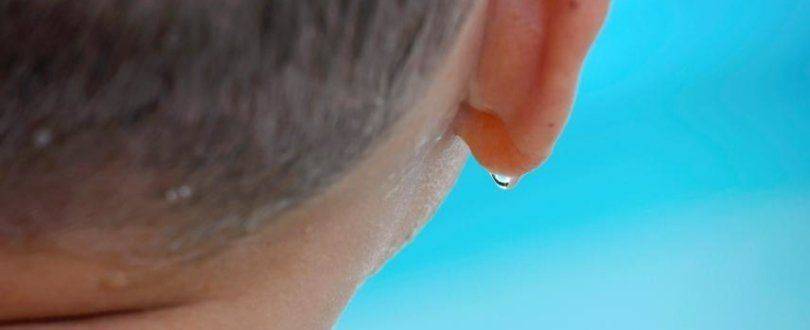
The problem of trapped water in the ear. Just a simple nuisance? A problem often faced by water sports athletes, those who engage in diving and other water sports, but also often densely by each of us especially during the summer period, is the entrapment of a small amount of water inside the ear.
Due to surface tension, water creates a thin film (membrane) that covers the ear canal and is difficult to remove.
This creates a feeling of moisture in the ear, the hearing ability decreases and of course the existence of water, as we have all felt, is certainly not pleasant. This discomfort can last from a few minutes to several hours. In various ways that can be simple (using a towel), comical (hitting the head with the hand), or dangerous (using a finger or other sharp objects) we try to get rid of it, most of the time without success.
The situation is not always as innocent as described above. Behind a simple discomfort, there is always the risk of an infection. More specifically, Swimmer's Ear or Desquamative External Otitis is a type of external otitis caused by water trapped in the external auditory canal.
The entry of moisture or water during swimming or bathing increases the wetting of the skin of the ear canal and, combined with the temperature prevailing in the specific area, creates favorable conditions for the growth of microbes. Attempts to remove water with objects that can create abrasions (injury) in the ear, support the growth of microbes and cause infection.
Also, the alveolus (wax) that accumulates in the ear canal absorbs water and swells, while the trapped water provides a medium for bacterial growth. Within a few or more hours of exposure to excessive moisture, symptoms of itching (itching), pain, possible discharge from the ear, and swelling (swelling) that causes partial blockage of the duct may appear.
The initial symptoms of the infection (Swimmer's Ear) include itching of the ear, accompanied by a wet feeling of the ear canal as well as discomfort leading to pain. The amount of moisture varies from minimal to excretory. In this case, the trapped water has mixed with amounts of alveoli as well as pus that came from the appearance of the swelling. Their joint presence can cause blockage and cause hearing loss.
A few years ago, first in the USA and later in other countries, hydrophilic solutions based on glycerin in the form of drops (ear drops) appeared, which had the purpose of removing water from the ear. Removal was done without the use of tools, without the use of pharmacological or immunological means. Simply, in a natural way, i.e. absorption of the trapped water by the hydrophilic components of the solution and its removal, the ear essentially "dries". Thus, within a few seconds, the user was freed from the discomfort caused by the increased moisture in the ear canal, but above all, he was no longer at risk of the possible growth of microbes and the appearance of otitis.
A similar and similar product has been on sale for a few months in the Greek market under the name DRY EAR®. Especially for our country, in which, due to its geographical location and climate, its inhabitants have close ties to the liquid element, such a product is necessary for everyone, whether he deals professionally, or as an amateur, or simply deals with the sea or the pool.
DRY EAR® is a product that should be in every home.
DRY EAR® is available exclusively in pharmacies.

No Comments